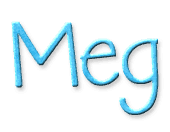We are getting ready to start our next big literacy unit–more work with research and text structures. Our curriculum suggests that this unit center around topics we have studied this year–where students learn to ask deeper questions and take the topic in new directions or infuse a new “slant” or perspective on the topic.
Each year I do this a little bit differently in my quest to be efficient and really make the learning experience meaningful for the students. I thought I’d share with you today how we worked to generate our list of topics in case you might like to try something similar down the road.
First of all, I have to say–I LOVE doing team research. I am a huge believer in having students work together at all stages of the writing process. Let’s be honest–there are 25 of them and only one of me! The more they can collaborate and truly learn to support each other, the more feedback they get and the better their product. That being said, each student DEFINITELY does their own work. In fact, if there is a research team of 3 working on “lightning”, their end products will definitely each have their own ‘slant” or focus. One student may end up focusing more on the science of electricity and lightning…another may focus on the dangers of lightning…you get the drift. They share resources, they read together, they practice taking notes together, they make suggestions to each other, revise and edit with each other, and truly serve as “experts” on the topic. I started doing research this way four or five years ago and I’ll never go back. I love NOT having 25 topics to worry about…I can meet with small groups and be FAR more effective with my conferring. This year I ended up with 11 groups–I was hoping for 8 but it just didn’t work out.
Want to see more of what I did to get our topics? Check out the photos below.
The students were getting pretty excited about just THESE topics, so we took some time and make a list of all the different science and social studies topics we have covered this year…it was fun to watch them remember things from way back in the fall. “Oh YEEEEEAH! I remember that NOW!”
I explained that it was time for them to try narrowing down those topics and finding new “slants” to take–in other words, related topics that students might really enjoy studying. I sent them off in pairs and trios and assigned each group ONE topic. They made a bullet pointed list in their writer’s notebook and then, after about 15 minutes, we came back together for me to record their thinking on the class chart.
We had some great discussions about what might make a good topic, what might make a topic tricky (ex. Are there a lot of resources out there that talk about the first explorers in Wisconsin? Probably just our old Wisconsin text books…not much fun for researching!) I recorded most decent ideas on the chart and then I got to work.
Once I had accomplished this, it was time to find out which students were interested in which topic–so I made a Google form to collect some information. We had a LOT of topics, so it took a while for students to read and rank each one.
I knew I had a few hours of work ahead of me that night–and I was right.
It took a while to really make teams I thought would work well together and had topics they were truly interested in learning more about…but I think I did it! I shared the research topics with the students yesterday and told them their teams and they were REALLY excited.











